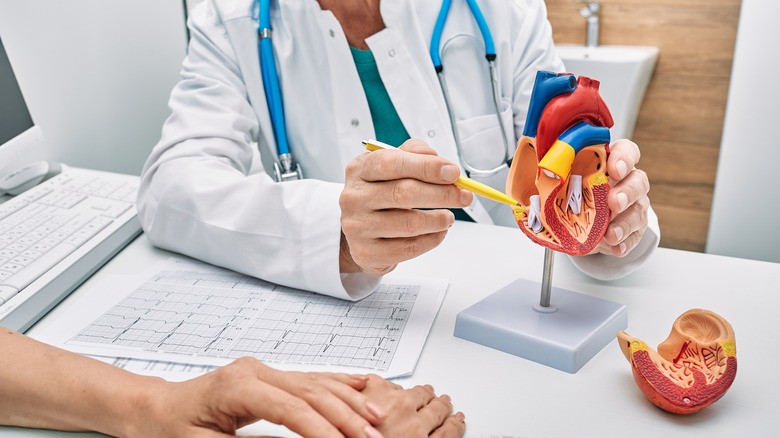Blood Thinners: The Complete Guide
Blood thinners are medications that help prevent blood clots or curtail the further growth of existing ones (via WebMD). Blood clots are a natural part of the body's healing process, which usually form at the location of an injury, according to the Cleveland Clinic. However, when large clots form in your bloodstream, they can get stuck in smaller blood vessels, blocking blood flow to essential organs. This can leave you susceptible to life-threatening complications. To prevent any clots, blood thinners are needed. These drugs are available orally in pill form or intravenously — meaning you can get this medication through your veins (via Healthline).
There are two main types of blood thinners: anticoagulants and antiplatelets. Each has a slightly different mechanism of action. Anticoagulants, for one, can keep clots from forming. Examples of anticoagulants include heparin, warfarin, and enoxaparin. On the other hand, antiplatelet drugs target tiny particles in the blood called platelets from clustering together and creating clots. Some examples of antiplatelets include aspirin, clopidogrel, and dipyridamole.
Conditions that require blood thinners
Doctors often prescribe specific blood thinning medications based on the location of the blood clot since blood thinners come in various types, according to Medical News Today. For example, people with clots in the arteries may require blood thinners that work directly on blood cells, like platelets.
Blood thinners, like warfarin, are usually prescribed for various conditions, including atrial fibrillation, venous thromboembolism, and pulmonary embolism (via DrugBank). Warfarin, as an anticoagulant, helps treat these conditions by inhibiting vitamin-K-dependent elements that contribute to various clotting factors, per a 2022 review published in StatPearls. However, the response varies amongst patients and depends on various factors, including but not limited to diet, drug metabolism, and the disease being treated.
Another 2014 study published in Fundamental & Clinical Pharmacology notes that direct oral anticoagulants are approved for treating acute coronary syndrome — a broad term used to describe conditions that suddenly reduce blood flow to the heart (via Mayo Clinic). One example of a condition is myocardial infarction. In Europe, blood thinners, like rivaroxaban, are approved to treat myocardial infarction (per the 2014 study).
Side effects of blood thinners
With proper use, blood thinners do work well, according to the Agency for Healthcare Research and Quality. However, to ensure your medication doesn't interfere with your daily life, it's best to have consistent communication with your doctor. The type of blood thinners prescribed by your doctor may determine what side effects you experience, explains Medline Plus. After all, the most common side effect is bleeding. Nevertheless, blood thinners may also cause an upset stomach, nausea, and diarrhea. Some women can even experience heavier menstrual flows.
Keep in mind, some can experience other forms of bleeding, including passing blood in urine or stool, bleeding gums, and prolonged nose bleeding (per National Health Service). Some may also notice a reduction in bone strength. If you experience unusually prolonged bleeding, please get in touch with your doctor or emergency services immediately. It's especially best to seek urgent medical care if you're involved in an accident or experience head trauma.



